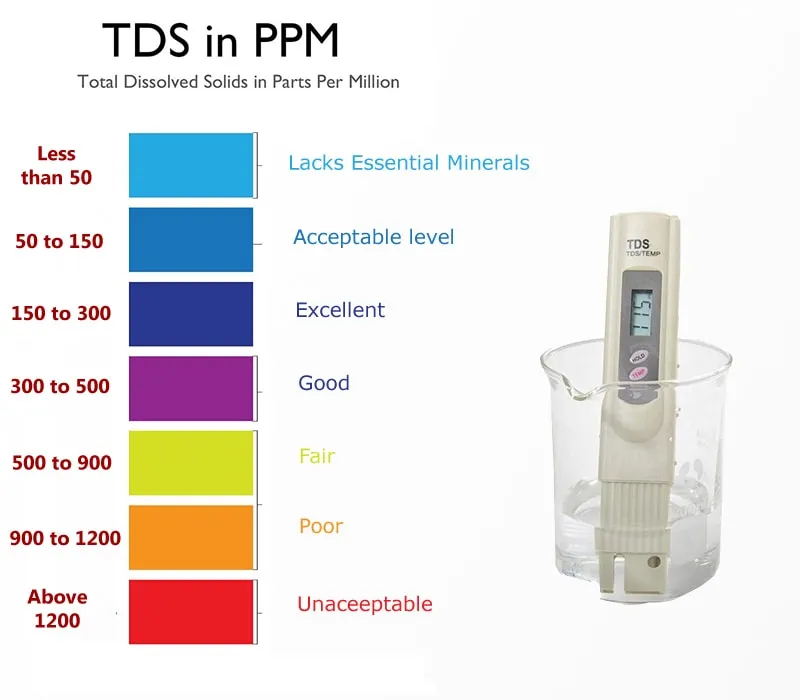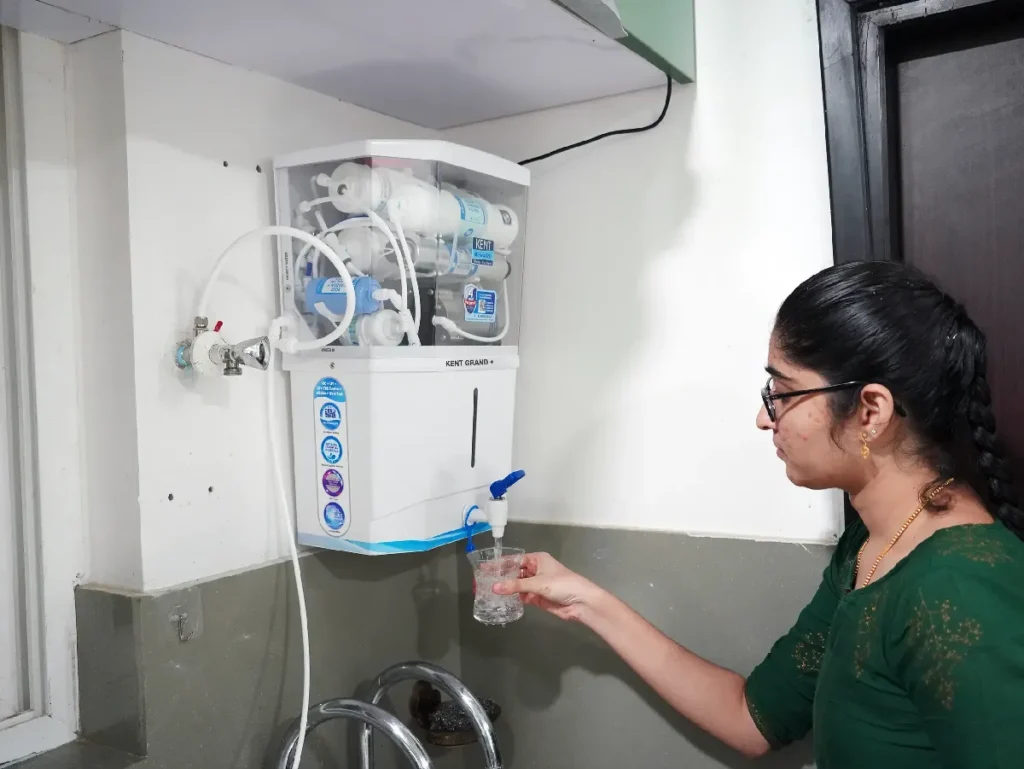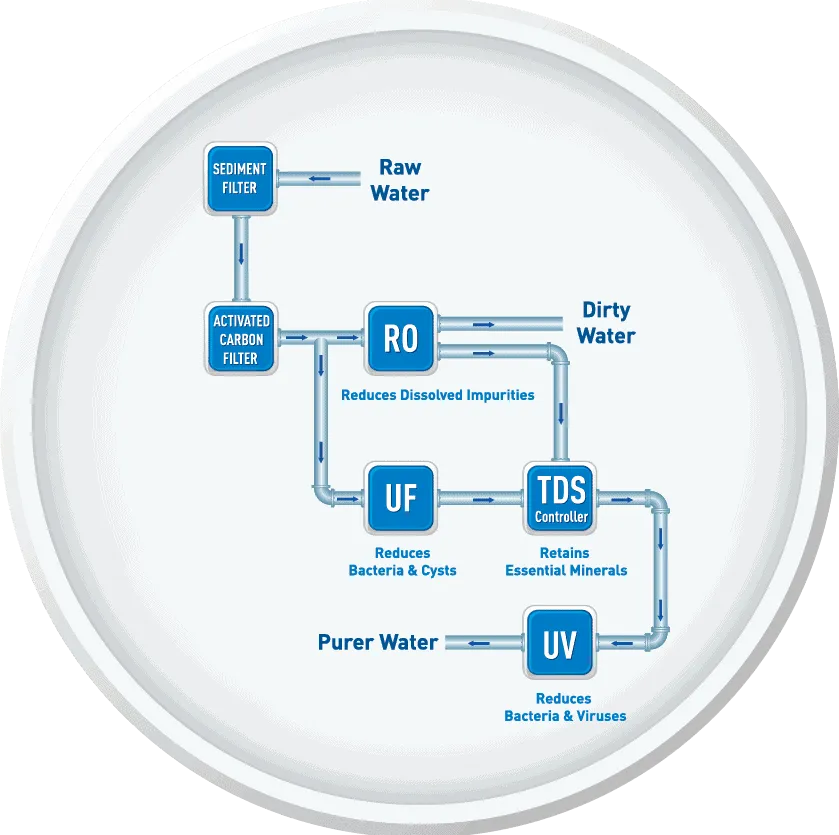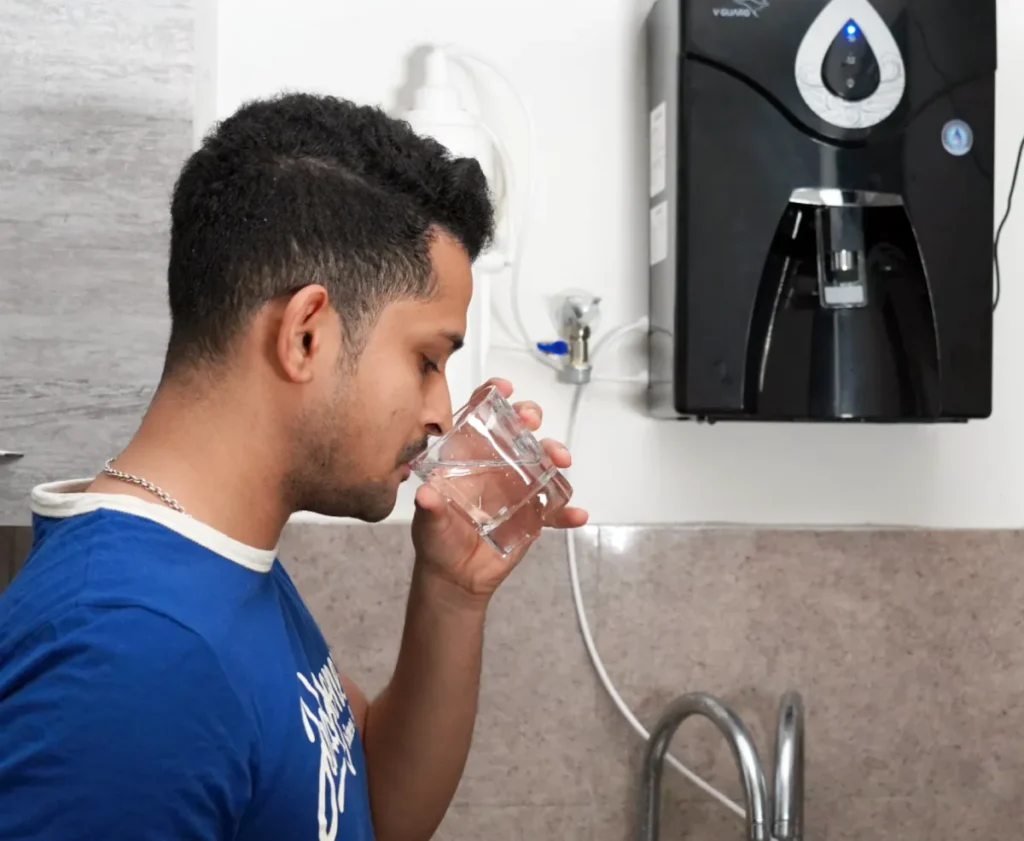WHO stipulates that water with TDS levels in the Range of 150 to 300 ppm is best suitable for human consumption
So what is TDS in water, and what should everyone know about TDS in water? This article explains everything in detail.
What is TDS in water?
Water has the chemical formula H2O. Therefore one molecule of pure water contains two atoms of hydrogen plus one atom of oxygen.
But is the water available in our taps pure?
Does it conform to the molecular formula H2O?
The answer is NO because all our water sources contain other dissolved solids in the form of minerals, salts, and other chemical formulations. Therefore, the pH level of tap water is never equal to 7. It is either less or more than 7, implying that our water sources are either acidic or alkaline.

What is the full form of TDS?
Many mistake TDS to denote Total Dissolved Salts. But the actual complete form of TDS is Total Dissolved Solids because the dissolved substances in water include salts, minerals, and metals. It includes essential minerals and chemicals like manganese, magnesium, and copper. At the same time, it also includes chlorides, sulphides, sulphates, carbonates, and other salts.
Besides, water sources can also contain harmful heavy metal impurities like lead, arsenic, antimony, and others, especially in industrial areas. Other contaminants include human, animal, and organic wastes. Therefore, our water sources do not contain 100% pure water. Instead, it has good and bad contaminants, depending on various factors.

Is TDS good or harmful to health?
It depends on the amount of TDS and the chemical composition of the contaminants. For example, manganese, magnesium, calcium, and copper are considered good TDS, whereas mercury, antimony, lead, chlorides, and others are considered harmful. Even the Good TDS are required only in required quantiy.
Therefore, the World Health Organization (WHO) has stipulated specific TDS levels classifying them as good, poor, or harmful.
| TDS Levels (parts per million) | WHO standards |
|---|---|
| Less than 50 | Good, but lacks essential minerals |
| 50 to 150 | Acceptable TDS levels |
| 150 to 300 | Excellent for human consumption |
| 300 to 500 | Good, depending on the constituents |
| 500 to 900 | Fair, depending on the constituents |
| 900 to 1200 | Poor |
| Above 1200 | Unacceptable and unfit for consumption |
While WHO standards stipulate 300 ppm as the ideal TDS level in the water, BIS adapts to Indian conditions and allows TDS levels up to 500 ppm as suitable for consumption without requiring RO purification. However, much depends on the composition of the contaminants.
For example, suppose the input water source has high arsenic levels, but TDS levels are less than 500 ppm. Then, you require an RO water purifier to remove these harmful contaminants.
How much TDS is good for health?
Many ask if 25 TDS is safe for drinking water or if 50 TDS is good for health. The answer is simple. The WHO chart clearly states that water with TDS levels up to 50 ppm is suitable for consumption but does not contain essential minerals. Therefore, water purifier manufacturers use TDS controllers or mineralizers to replenish the lost minerals during the RO water purification process.

How do you measure TDS levels in water?
The only way to measure TDS levels in water is by using a TDS meter. These TDS meters are readily available in the retail market. Anyone can use these digital meters to measure TDS levels because it is similar to using a digital thermometer.

How do you reduce TDS levels in the water source?
The best way to reduce TDS levels in water is to use a RO water purifier. The Reverse Osmosis water purification procedure can reduce TDS levels even if they are up to 2000 ppm. Since the WHO standards specify that TDS levels up to 500 ppm are healthy for human consumption, we recommend using RO water purifiers if the TDS levels in the water source measure more than 300 ppm.

However, we reiterate that the contaminant composition plays a critical role in deciding whether to use an RO water purifier every time. An RO water purifier is essential if the TDS contaminants include heavy metal impurities like mercury, cadmium, arsenic, lead, and antimony, even if the TDS levels are less than 500 ppm.
How do you deal with other contaminants?
Contaminants need not always be TDS. It can be bacterial contamination or sediment contamination. Under such circumstances, RO water purification might not be necessary. A Sediment filter or Ultra Filtration should suffice to deal with sediment contaminants. Ultraviolet lamp purification is sufficient to deal with bacteria and other microorganisms.
How does the Reverse Osmosis process work?
Reverse Osmosis involves using a semipermeable membrane to remove TDS from water. Water naturally tends to move from an area of lower TDS concentration to a higher one through a semipermeable membrane. The Reverse osmosis process is the opposite of osmosis. Here, the water moves from an area of higher concentration to a lower one. However, this process requires a pump to force the water through the semipermeable RO membrane.

The RO purification process restricts the movement of all contaminants with a molecular weight of more than 20. Therefore, the process removes essential minerals along with harmful compounds. Therefore, the resultant RO-purified water has low TDS levels (maybe up to 50 ppm). This water does not have a good taste. Besides, it does not have essential minerals. So RO water purifier manufacturers use TDS controllers or mineralizers to replenish the minerals lost during the RO purification process.
How do TDS controllers and mineralizers work?
TDS controllers reintroduce TDS into the RO-purified water after purification to replenish the lost minerals. This method is recommended when the original water source does not contain harmful industrial contaminants. Otherwise, the risk of reintroducing harmful chemicals can backfire and contaminate the water.

Under such circumstances, a mineralizer is better. The mineralizer cartridge introduces essential minerals like magnesium, calcium, and copper. Water purifier manufacturers name this feature differently, but the principle is the same.
Does boiling water reduce TDS levels?
Boiling the water does not remove TDS because the harmful contaminants do not vaporize. Instead, they remain in the water and make it unfit for consumption. Therefore, RO purification is the most effective way of removing TDS from water.
What is the ideal pH level of drinking water?
Ideally, the pH level of water should be 7. However, 100% pure water does not have any taste. Therefore, it requires some TDS to improve its taste and nutritional value. Therefore, the ideal pH level of drinking water should be between 6.5 and 8.5. The best quality drinking water should be slightly alkaline.

Does spring water contain TDS?
Spring water is considered the purest form of drinking water. However, it contains essential minerals to make the TDS levels around 60 ppm.
Final Thoughts
TDS in water is not as harmful as it seems to be. Even the WHO stipulates that water with TDS levels up to 300 ppm is suitable for human consumption. Besides, RO water purification methods are available for reducing TDS levels in the water, even if it is as high as 2000 ppm. This article should clarify all your doubts about TDS in water.
